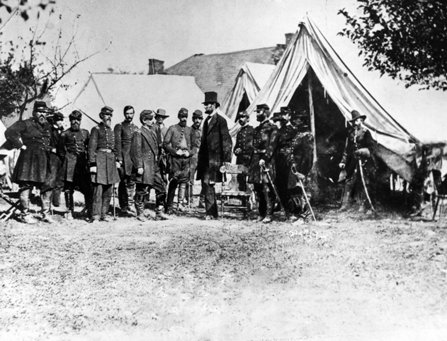Addiction Throughout the Ages

When seeking to address the 21st-century addiction epidemic, one of the first lessons to learn is that this is not a new problem. It’s easy to get swept up in the rush of media headlines and newsreels about the epidemic, the national public health emergency, the nationwide crisis that is our country’s drug problem. And yes, it is a severe issue. But it’s not the first time we’ve dealt with a drug crisis. The problem as it stands today is likely the worst it’s ever been in our history, but this is still not our country’s first encounter with a drug problem.
Addiction Is Not a New Problem
“In 2017, approximately 19.7 million people aged 12 or older had a substance use disorder…”
That’s right; addiction is by no means a new problem. The critical issue about the problem today that makes it so severe is that more people are addicted to drugs and alcohol in this country than there ever have been before. According to the National Survey on Drug Use and Health, “In 2017, approximately 19.7 million people aged 12 or older had a substance use disorder (SUD) related to their use of alcohol or illicit drugs in the past year, including 14.5 million people who had an alcohol use disorder and 7.5 million people who had an illicit drug use disorder.”
Let’s look at the population of the United States. Estimates indicate that the U.S. population was at 325.7 million in 2017. If we do some basic math, (dividing the 2017 population of addicts into the total population figure for that year), we can determine that 6 percent of the U.S. population is addicted to drugs and/or alcohol (or at least was, as of 2017). That means, mathematically, if you know 100 people, the statistics say that likely six of them are addicted to drugs and/or alcohol.
Not only are more people addicted, but addiction is harming them on a level previously heard of. In decades past, the most dangerous drugs were street drugs like heroin. Now, addicts take drugs like fentanyl, an opiate said to be 50 times more potent than heroin (more on that later).
Also, addicts are living longer merely because our technology for saving lives during drug use is more effective. We have naloxone now, which brings people back from the brink of death via overdose. But by that same token, these addicts often don’t then receive treatment (a huge mistake). With no treatment as a follow-up to a life saved from an overdose, the addict relapses, returns to drug use, and so their condition worsens.
And even though some addicts are living longer, others are not. For every life saved from an overdose, another addict overdoses with no one around to tend to them, and so dies from the overdose. According to the CDC, more than 70,000 people died from drug-related causes in 2017 the highest ever in recorded history.
Another factor is that, since the turn of the century, the total number of Americans who suffer from drug and alcohol addiction has skyrocketed. And that’s not even getting into the alarming death toll from overdoses, the severe strain the crisis has had on the country’s economy, and the socio-humanitarian damage of addiction.
We do need to concede that our efforts to report and study addiction have increased tremendously in the last two decades. So it is true that we know a lot more about the problem today than we did just thirty years ago. But even with the fact that addiction was not studied as well in the 19th and 20th century as it is today, we can still go off what data we do have about previous decades and centuries and arrive at the same conclusion that addiction is worse today than it was decades or centuries ago.
While it is true that addiction is far more severe now than it has been in our past, we must recognize that is is still not a new issue. Let’s take a look at three areas of American history where addiction played a prominent role. There is no period in our history where addiction was as harmful and severe as it is today, but there have been micro-epidemics of substance abuse throughout the American Saga.
The Civil War—America’s First, Real Exposure to Opioid Use

Did you know there was an opioid crisis right around the Civil War era (1860 to 1865) and the years that followed? From the Department of Social Medicine via the UNC School of Medicine, “In the decades after the Civil War, the United States faced an epidemic of opiate addiction among Civil War veterans. Americans widely feared that opiate addiction among traumatized veterans was linked to the Civil War, and was dangerously on the rise.”
Morphine was the most common opiate drug of that period, and it was wreaking havoc in late-19th century America. The opioids we use today are several times more potent than morphine. Fentanyl, the opiate drug responsible for the lion’s share of opiate deaths of the last several years, is 80 to 100 times more potent than morphine, according to the DEA.
The 1920s—The “Roaring” Twenties Came with Roaring Alcohol Addiction
Alcohol addiction and heavy alcohol consumption was a significant problem in the early 1900s. That’s a large part of why Prohibition was ratified as the 18th Amendment in 1919. While alcohol consumption did decline in the early part of the 1920s, alcohol use increased towards the end of the decade, finally resulting in the repeal of the alcohol ban in 1933.
“Prohibition was initially successful in reducing alcohol intake; however, illegal alcohol consumption slowly increased in the late 1920s.”
According to Oxford Academic, “Prohibition was initially successful in reducing alcohol intake; however, illegal alcohol consumption slowly increased in the late 1920s.”
It seemed that even the mighty U.S. federal government, one of the most powerful governments in the world, could not control alcohol consumption among the American people. And the nation’s drinking problem has only grown since then.
The 1980s—The Era of Crack Cocaine

Another addiction crisis broke out when crack cocaine came on the scene in the 1980s. Some say the making of crack cocaine was stumbled across by Miami drug users; others have a theory that the CIA introduced crack cocaine to African American communities in inner cities. The generally accepted history comes from the Drug Enforcement Administration. According to the DEA, powdered cocaine was flooding the U.S. market in the early 1980s, and that caused prices to plummet. According to the DEA, “Faced with dropping prices for their illegal product, drug dealers made a shrewd marketing decision to convert the powder to ’crack,’ a smokeable form of cocaine. It was cheap, simple to produce, ready to use, and highly profitable for dealers to develop. As early as 1981, reports of crack appeared in Los Angeles, San Diego, Houston, and in the Caribbean.”
Crack cocaine overtook much of the drug market, spiking addiction statistics and resulting in heavy-handed, “War on Drugs” criminal justice actions from the U.S. government. Crack cocaine addiction is still a significant problem today.
Addressing Drug and Alcohol Addiction Today—Treatment Is the Answer
American history is dotted with periods of drug abuse. Our drug problem today is not unlike drug issues of the past, the critical difference being that the scale of addiction today is unlike anything our country has ever seen before.
Curbing the spread of drug and alcohol addiction in the United States today comes about in two ways, both of which must be worked on in tandem to ensure maximum efficacy:
- Prevention. We have to work towards preventing the drug problem from occurring before it even manifests. That means educating people on the drug problem by getting drug education into the curriculum in schools to teach students about the dangers of drugs, and by raising awareness of the drug problem in our communities, etc.
- Rehabilitation. The drug problem is never going to go away until we help those who are addicted to get clean from their drug habits. The most effective way to accomplish this is with the help of residential drug and alcohol addiction treatment. Treatment centers offer the way out of even the most crippling drug habits.
Sometimes it feels like history is repeating itself only this time, the drug crisis is far more severe. However, we do have the solutions to tackle addiction through residential rehabilitation programs and prevention efforts, and those solutions were not always available to us. If we work together and stay diligent with this problem, we too can make history, but this time for the better. We can be the generation that ended addiction in America.
Sources:
- https://www.samhsa.gov/data/report/2017-nsduh-annual-national-report
- https://www.med.unc.edu/socialmed/event/the-civil-war-and-opiate-insanity/
- https://www.dea.gov/factsheets/fentanyl
- https://academic.oup.com/alcalc/article/35/1/10/142396
- https://www.cdc.gov/drugoverdose/epidemic/index.html
Reviewed and Edited by Claire Pinelli, ICAADC, CCS, LADC, RAS, MCAP


